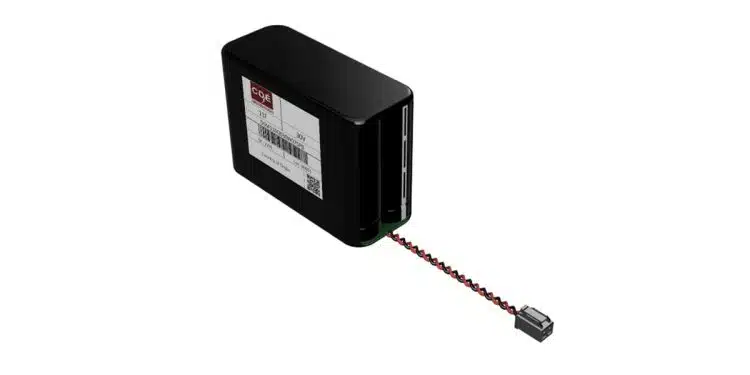A new line of standard supercapacitor modules has been announced by Cornell Dubilier (CDE). The DSM Series responds to the need for supercapacitor storage capabilities at higher voltages than what single components can provide. The new modules are offered in packs with 3, 6, or 10 cells in series for 9V, 18V, and 30V outputs. Capacitance values from 0.15 to 36.6 farads. These options provide designers with tested, ready-to-use solutions.
DSM standard modules simplify the application of supercapacitors for large energy storage, providing designers with an easy and safe alternative to lithium-ion batteries. They can be rapidly implemented in power systems for energy harvesting, storage, and backup applications.
Each module features integrated-cell balancing, insulated construction, and cable/connector assemblies to facilitate immediate use. The DSM series reduces design time by eliminating the need for engineering resources to create an energy storage solution. A Molex Mini-Lock connector is utilized, making connectivity to the PCB a snap.
Modules are rated for temperatures up to 85 ºC, and unlike lithium-ion batteries, there is no charge-discharge cycle degradation and no risk of dangerous thermal runaway. Life is rated for 500,000 cycles at 25 °C.
The operating temperature range is –40 °C to +65 °C for 9V, 18V, and 30V, with an extended temperature range of –40 °C to +85 °C at 7.5V, 15V, and 25V, respectively. The storage temperature range is –40 °C to +65 °C. DSM supercapacitor modules have a lifetime of 1,000 hours at rated voltage. They are compliant with RoHS, and the individual cells within the module meet UL 810A.
The wide operating temperature and voltage ratings expand the range of applications. DSM modules are a great fit for MRI systems, GPS, industrial backup, AGVs (automated guided vehicles), and more. Custom supercapacitor modules are also available upon request to address different form factors, mounting options, cell balancing, protection, connectivity, and more.
Features
- Standard, stocked modules, great for prototyping
- Wide operating temperatures compared to Li-batteries
- Voltages up to 30 Vdc, capacitance from 0.15 to 36.6 Farads
- Safe, green alternative to Li-ion batteries
- Each module has voltage balancing
- REACH and RoHS compliant
- UL 810A recognized cells
- Custom designs available


































